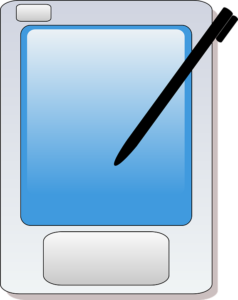
Touchscreens have evolved over the years. In the past, nearly all touchscreens used one of two different technologies to detect touch commands: resistive or capacitive. While neither of these technologies has become obsolete, there are now other technologies available, including surface acoustic wave (SAW).
What Is SAW Technology?
SAW is a type of touchscreen technology. Like capacitive and resistive, it’s used to detect touch commands.
There are touchscreen devices that use SAW technology. Information kiosks, ATMs, human machine interfaces (HMIs) and even tablets may feature SAW technology. They can detect touch commands just like all other touchscreens. SAW touchscreens, though, are powered by a different technology that leverages ultrasonic waves.
How SAW Touchscreens Work
How do SAW touchscreens detect touch commands exactly? Their mechanics revolve around ultrasonic waves. Resistive touchscreens use pressure to detect touch commands. Capacitive touchscreens use conductivity or capacitance to detect touch commands. SAW touchscreens, on the other hand, use ultrasonic waves to detect touch commands.
Ultrasonic waves are sound waves with a frequency that’s outside that of human hearing. In other words, they are silent sound waves. When turned on, SAW touchscreens will produce ultrasonic waves. The ultrasonic waves will travel silently across the surface of the display interface.
SAW touchscreens use sensors to detect the ultrasonic waves and, thus, any touch commands that occur. Performing a touch command will absorb some of the ultrasonic waves on the display interface. The sensors will pick up this distortion, and the SAW touchscreen will respond by registering a touch command in that area.
Why SAW Touchscreens Are Popular
They may not be as common as capacitive touchscreens, but SAW touchscreens are still popular. They don’t contain any moving parts. SAW touchscreens are designed with simple transducers, so they don’t wear out like mechanical-based touchscreens.
SAW touchscreens support all types of touch commands. You can control them with a bare finger, a gloved finger, a stylus or pretty much any other object. As long as you place a physical and solid object against the surface of a SAW touchscreen, it will register your touch command. Other touchscreens like capacitive typically only work with a bare finger or a conductive object.
SAW touchscreens offer excellent image clarity. They feature a transparent top layer like all touchscreens. While other touchscreens may feature a plastic or polymer top layer, however, SAW touchscreens feature an all-glass top layer. This all-glass top layer allows for superior image clarity.
